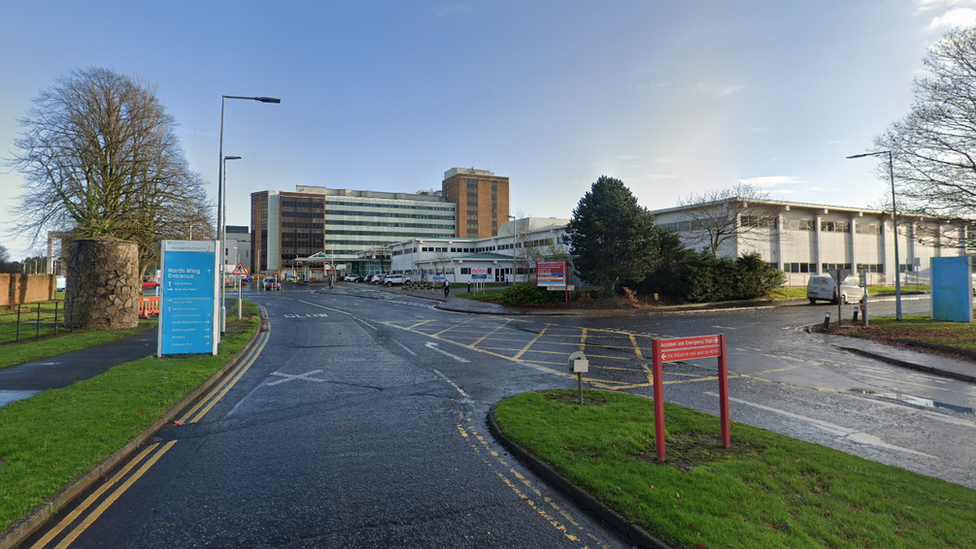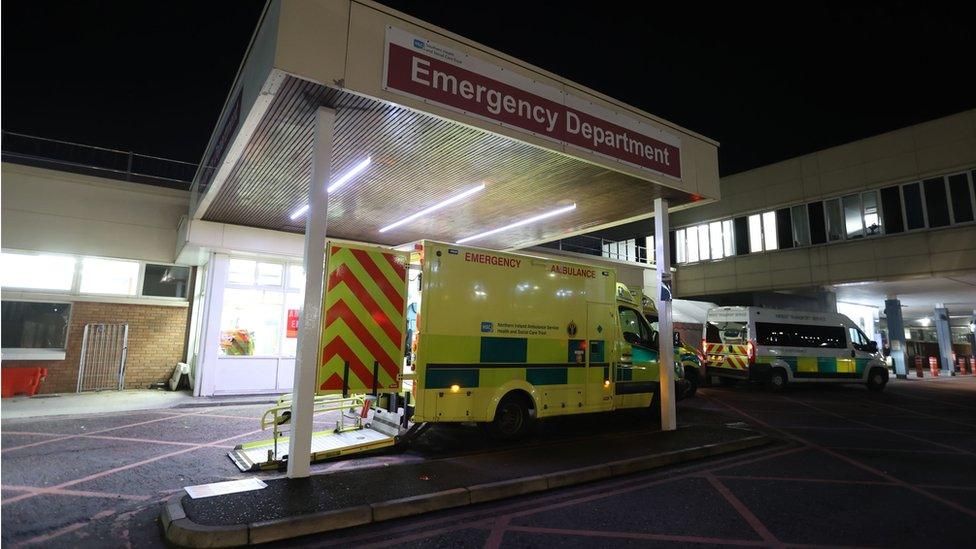Altnagelvin: Patients waited 20 hours to be admitted to A&E
- Published

Altnagelvin Hospital in Londonderry
Patients arriving at Altnagelvin Hospital A&E waited an average of 20 hours to be admitted last month.
The current target time to be admitted to an emergency department is four hours.
Department of Health figures also showed a jump of 12 per cent in people attending EDs compared to the same period the year before.
The department said the figures reflected two new urgent-care services being used to assess patients.
It said use of the PhoneFirst and Urgent Care Centres had seen over 10,000 fewer people attending emergency departments during December.
More than 62,000 people attended Northern Ireland's emergency departments last month.
'Worst crisis we ever had'
Dr Paul Kerr, vice-president of the Royal College of Emergency Medicine NI, said the latest figures showed the scale of the health crisis in Northern Ireland.
"It is devastating. Staff are pushed to their very limit delivering care for their patients in these extremely challenging conditions, while patients are anxious and worried," he said.
"Staff cannot continue to work through adrenaline and goodwill to prop up a broken and failing system. This is the worst crisis we've ever had, and you can see that in the figures published today."
Dr Kerr said there was a need for "urgent and meaningful action" and called on political leaders to "recognise the severity of the crisis."
'Everything grinds to a halt'
Last month, Dr Paul Baylis, a consultant in emergency medicine at Altnagelvin, said the situation was worse than Groundhog Day.
"I'd settle for Groundhog Day at the moment; the truth is it isn't Groundhog Day because in Groundhog Day it was always the same.
"Things are getting worse steadily and that's the reality.
"It's quite simply overrun - when things are overrun things become inefficient and everything grinds to a halt.
"That's extremely frustrating for the doctors and nurses working there, but more so for the patients who are sitting on trolleys - if they're lucky getting lying down on trolleys: many patients are sitting on chairs."
Related topics
- Published30 December 2022
